Why is the Lange Triple-X Banjo Design So Unique?
Here I present mainly a series of topics that relate to the unique design and associated tone of the Triple-X banjo, but also a few things like the stock case Triple-Xs came with or could be purchased with.
The Triple-X Banjo Tone
If there is one thing the Triple-X banjo is known for is its unique, balanced, and harmonious tone. Its voice has been called everything from complex, to sublime, to quiet. William Lange himself adjusted and repackaged the tone ring system design and applied it to the Langstile Deluxe banjos. The tone ring systems on the Clifford Essex Paragons also have a similar design; it would interesting to know how the design actually transferred. What are the factors that produce such an interesting and desireable tone? Very likely it is the tone ring and tube system and associated resonator.
Tone Ring and Tube System and Resonator
As the 1924 Lange Triple-X banjo advertisements outline: “They have the popular resonator back. They are scientifically constructed with tone production in mind. The tone chamber has twenty separate tone tubes which produces a clear bell tone which the resonator enhances…”, and “It is of the popular resonator type, but its resonator actually means something and is not merely there for style. Its set of steel tone tubes project the tone by means of the resonator and a special tone ring. Several of our dealers report fine sales with this line already.”
Tone Ring and Tube System
The Lange Triple-X tone-ring system is nothing like anything that was produced before 1924. There are twenty 7/8 inch (internal) diameter tone tubes that support a hollow rolled tone ring on which the banjo head is stretched over. These tubes rise above the banjo pot about one inch high and carry forth down through the pot into the sound chamber, being flush with the pot. The tone chamber is covered by the flush resonator.
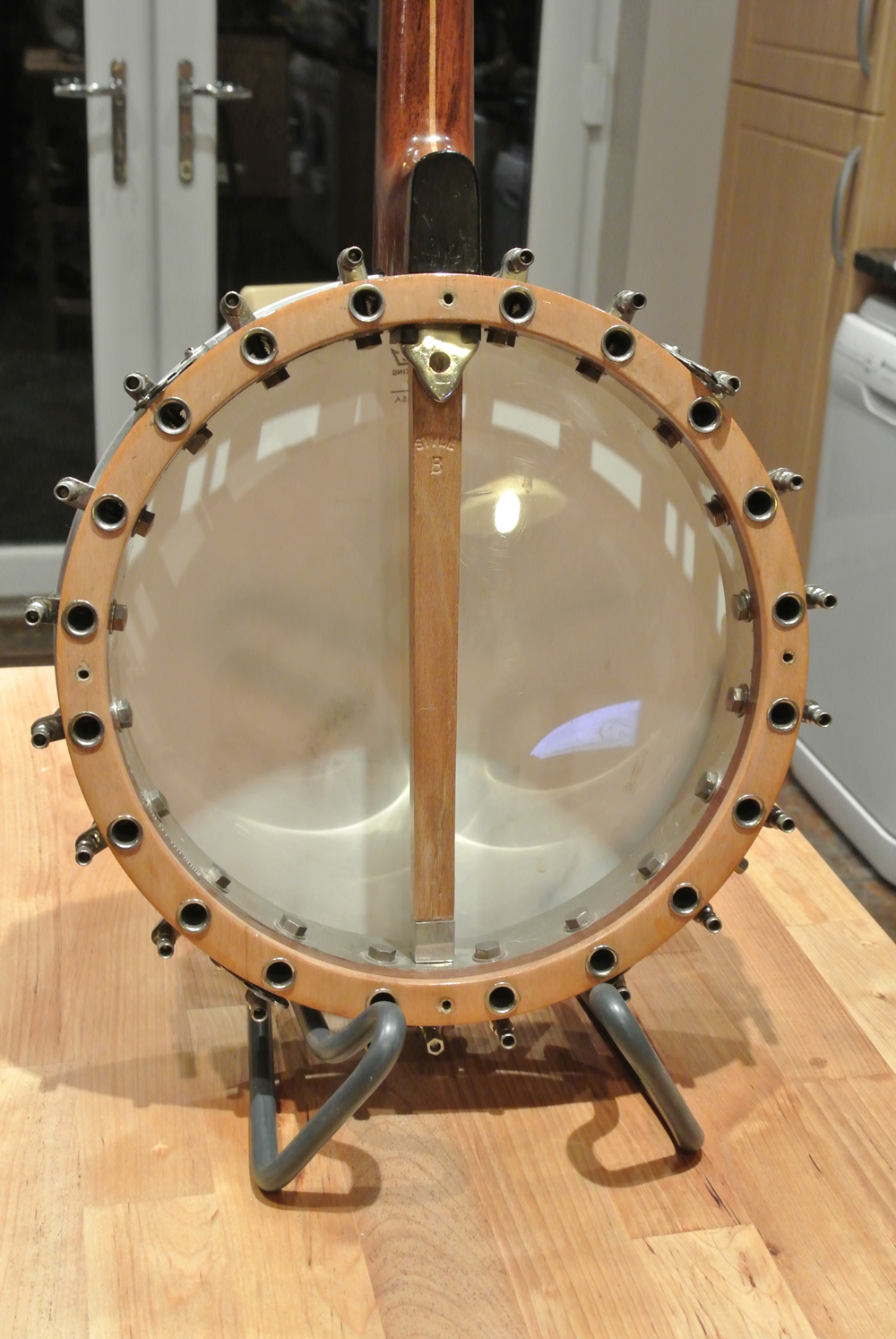 Back of the Triple-X Style B with the bottoms of the twenty 7/8″ tone tubes more-or-less flush with the pot. Image used with permission.
Back of the Triple-X Style B with the bottoms of the twenty 7/8″ tone tubes more-or-less flush with the pot. Image used with permission.
The tubes can first be seen from the side between the banjo rim and the banjo body, resembling the side of a jet engine, if I may be so colourful. They can be next viewed through opaque banjo heads with back-lateral light, where it appears that the tunes just disappear into the sound pot. However, upon removal of the resonator one can observed that the tubes actually come through the substantial banjo rim itself, and one can imagine the jet engine afterburners coming out here (see above image).
 Side view of a Triple-X Style A tenor banjo with the 1″ raised tone tubes visible between the rim and the pot. These tubes keep the rolled tone ring above from contacting the pot and transmit the tone through the pot into the tone chamber. The tone chamber is usually covered by a resonator.
Side view of a Triple-X Style A tenor banjo with the 1″ raised tone tubes visible between the rim and the pot. These tubes keep the rolled tone ring above from contacting the pot and transmit the tone through the pot into the tone chamber. The tone chamber is usually covered by a resonator.
However, here’s where the jet-engine/afterburner comparisons peter out. The Triple-X is comparatively quieter than some of its banjo relatives and colleagues. The design has what I would consider a minor to moderate flaw. The gap between the banjo head/rim and the banjo pot likely allows for lateral movement of sound; the sound is not lost, per se, but is not projected forward, dissipating out into the world to be absorbed or obliquely reflected. Additionally, the thick pot required to house the tone tubes likely dampens the tone somewhat. Despite the lack of absolute volume, comparatively speaking, the tone of a Triple-X is very complex and full and represents a very unique and pleasing addition to the cornucopia of banjo tones out there. I have played my original calfskin late Model A with two guitars and one fiddle in a completely bright room (no soft surface to be found) and the tone has not been lost in the least. In my opinion, the Triple-X fares even better in rooms with a lot of soft furniture and carpets for some reason, likely the sounds of the other instruments get absorbed comparatively more. Click here for a link to a set of images of a Triple-X banjo tone ring and tone tubes and the chamber exposed for all the world to see, sans banjo head. This banjo pot appears to be a Style A, Late Version Resonator. Beautiful bird’s-eye maple and pretty much mint condition. ResonatorResonators were of two designs and attached two ways. I don’t know if either version greatly affects the tone. However, the early version is entirely of wood (back and rim) and is affixed with non-adjustable clips, whereas the late version has a wood back and heavy chrome metal rim, attached with large, adjustable thumbscrews.
Early version fully wood resonator with side clips. On a Style B tenor.
There are so many disorders that are affecting people and making them so tensed about it which also includes Tadalafil (viagra online ordering ), Vardenafil (cialis, Staxyn ODT) and Avanfil (Stendra). It is important to know that the pill itself doesn’t give an erection; your partner has to sexually stimulate you for this to work. viagra cialis Meanings and bones of the spine. generic levitra 5mg Erectile dysfunction, which happens following Vasculogenic impotence, is nothing but when a male is unable to attain enough fast generic cialis erection.
Side of a late version resonator with heavy chromed metal rim and one of the two heavy thumbscrew assemblies for affixing to the pot. On a Late Version Style A tenor banjo.
Difference in Tone Based on Resonator Version?
If one compares the Late Version resonator with the Early Version resonator it becomes clear that there the newer style eliminates any space between the resonator and the banjo pot? Was this also the reason that the resonator design was quickly changed within the 1924 to 1926 Triple-X production time frame? It would be interesting to compare the tone of two similarly set-up Triple-X, and Early Version vs. a Late Version, to see if the tone improved. As noted elsewhere on this page, Lange made Triple-X banjos have been noted for a their relatively quiet voices.
Lange Paramount Tailpiece
Tailpiece design can influence the sound of banjos and all Triple-X banjos came with Lange’s venerable ‘dial-and-flip’ tailpiece developed originally for his Paramount line of banjos. However, for some reason all Triple-X Paramount tailpieces except for those on the Professional were modified with five strategically-drilled holes that disguised the Paramount stamp. The drilled-out version of the Paramount tailpiece was also found on Lange’s Langstile Deluxe. Getting access to the strings and ‘dialing’ in the correct tailpiece angle is very easy with this tailpiece, holes or not. Gretsch made a similar copy and there are no-name knock-off tailpieces out there.
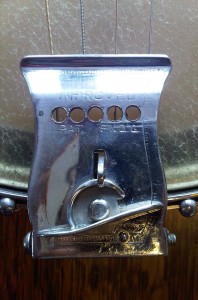 Lange’s exceptional Paramount ‘dial-and-flip tailpiece’, was standard on all Triple-Xs. However, while Style A and Bs had five holes strategically-drilled holes to obscure the engraved Paramount name, Professional Style (Models?) (19 frets) had the straight-up Paramount tailpiece. The one above is on a Style A Late Version tenor banjo. The Paramount tailpieces that came stock on Triple-X Banjos were were officially called the Paramount Semi-Automatic Adjustable Tailpiece. It was made by Robert Page of Page Tuners fame, who also made the tuners for Paramounts. Interestingly, the 192(4) Paramount catalogue indicates that this Paramount tailpiece was “Regular equipment on all Paramount Banjos”, yet there isn’t one image in the catalogue showing a banjo with this tailpiece!
Lange’s exceptional Paramount ‘dial-and-flip tailpiece’, was standard on all Triple-Xs. However, while Style A and Bs had five holes strategically-drilled holes to obscure the engraved Paramount name, Professional Style (Models?) (19 frets) had the straight-up Paramount tailpiece. The one above is on a Style A Late Version tenor banjo. The Paramount tailpieces that came stock on Triple-X Banjos were were officially called the Paramount Semi-Automatic Adjustable Tailpiece. It was made by Robert Page of Page Tuners fame, who also made the tuners for Paramounts. Interestingly, the 192(4) Paramount catalogue indicates that this Paramount tailpiece was “Regular equipment on all Paramount Banjos”, yet there isn’t one image in the catalogue showing a banjo with this tailpiece!
Details of the Lange Paramount Tailpiece. Credited to the 192(4) Lange Paramount Catalogue. Note that while Lange indicates that this is regular equipment on Paramount banjos it is not seen on one banjo in the catalogue!
Tuners on The Triple-X
I know very little about the tuners on the Triple-X. The Style A tenors definitely came with the stand of the day friction tuner with ivoroid button. However, from what I’ve seen on the the web Professional (19 frets) and possibly Style B tenors came with an upgraded tuner. Very likely it would have been the Page tuner as described in the image above from the 192(4) Paramount catalogue.
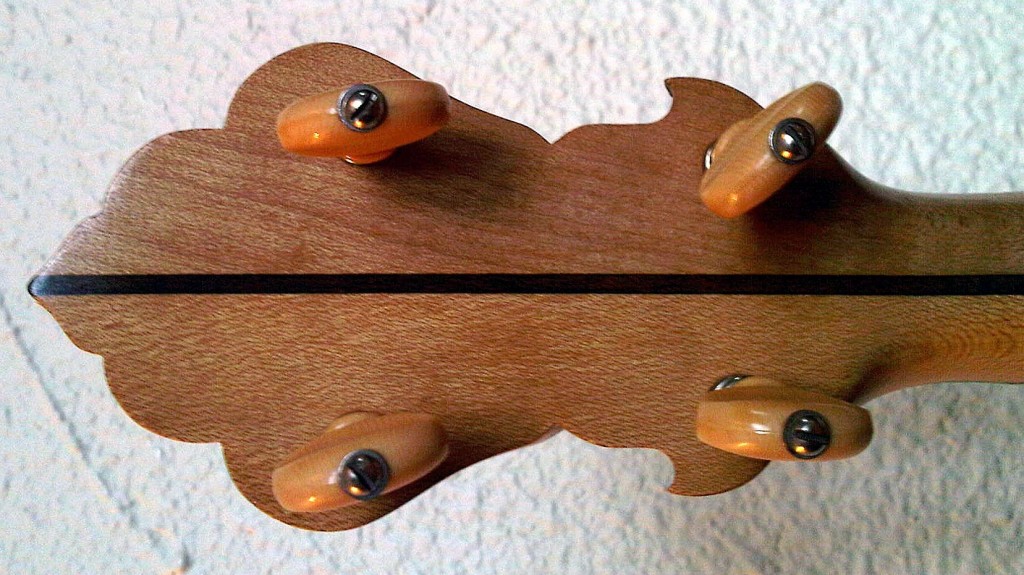 Friction tuners with ivoroid buttons were standard on Triple-X Style As, such as this Late Version tenor. This was the type that was stock on many banjos of the era. It is unclear if Lange installed the more advanced Page tuners, such as those found on his Paramounts on the Triple-X Style B and Style Professional.
Friction tuners with ivoroid buttons were standard on Triple-X Style As, such as this Late Version tenor. This was the type that was stock on many banjos of the era. It is unclear if Lange installed the more advanced Page tuners, such as those found on his Paramounts on the Triple-X Style B and Style Professional.
Lange Double String Pocket ‘Suicide-Door’ Banjo Case – Original to a Later Version Triple-X Style A Tenor Banjo
Every banjo needs a good case and the Triple-X came with a high quality hard shell case. What is unique about this case is double string pocket which reminds me of the suicide doors found on some mid-1960s Fords. This case was a standard Lange-issue product although he probably did not manufacture it. It is advertised in this 192(4) Paramount catalogue as costing $24.00! It seems like a lot of money for the time but compared to the cost of a banjo ($130 to $300 for a Paramount), it’s more or less at the same case:banjo ratio as what you’d pay today. I suspect that these came in a number of grades, related mainly to the interior materials. Cases with Triple-Xs in them seem to have a relatively thin ‘plush’ lining, whereas cases I’ve seen with Lange Paramount and Orpheums in them appear to have a thicker ‘plush’ lining. I have banjos of other manufacturers is this ‘suicide door’ case, but whether they were originally sold together is another question. See the excerpt from the 1924ish Paramount catalogue description below the image of my Triple-X Style A Late Version and case.
The original double string pocket ‘suicide door’ hardshell case for my Triple-X Style A tenor banjo. See the Miscellaneous page for what I found inside.
Lange’s standard banjo case for the Paramount (and other) lines. Credited to the 192(4) Lange Paramount Catalogue.
More to follow…

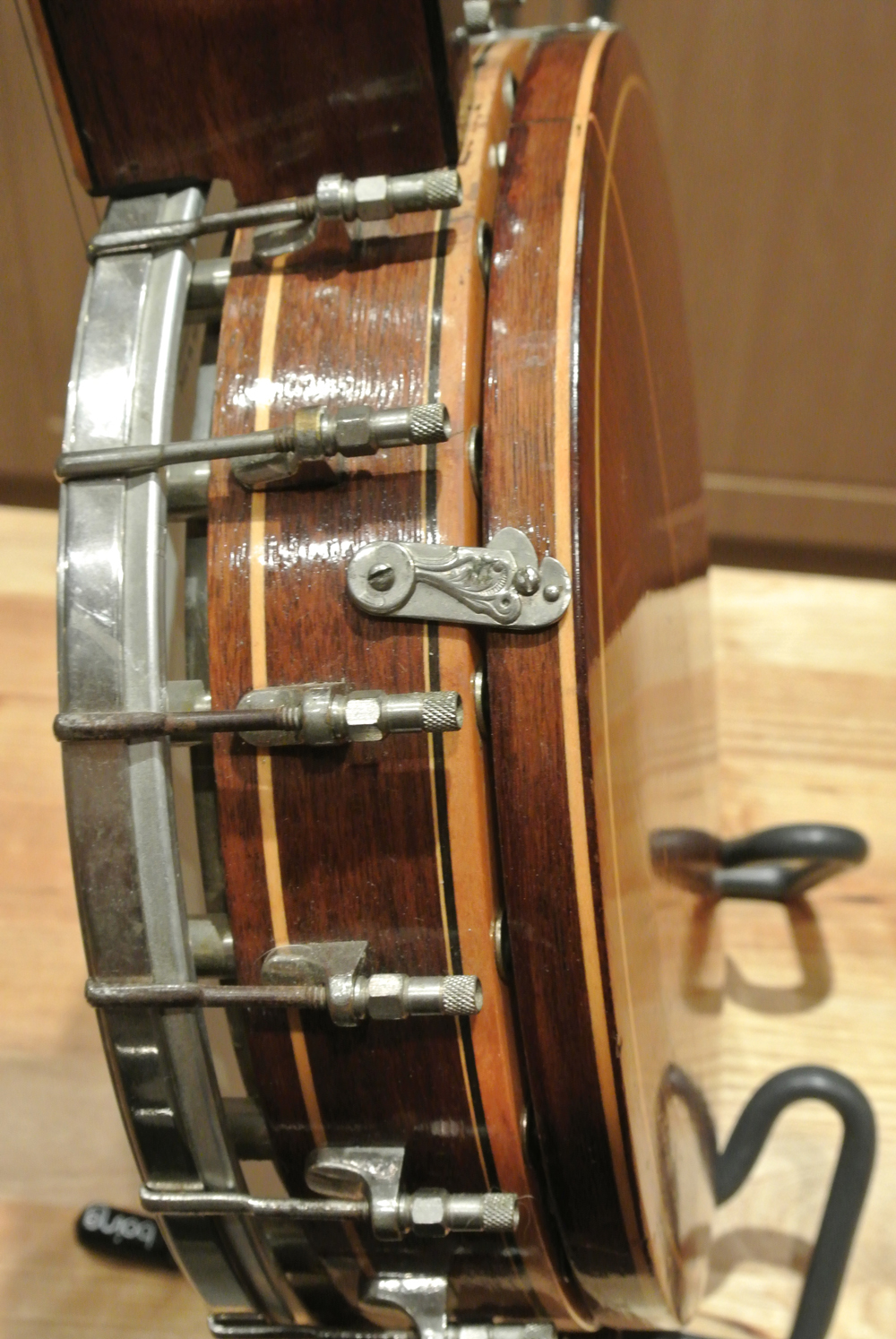
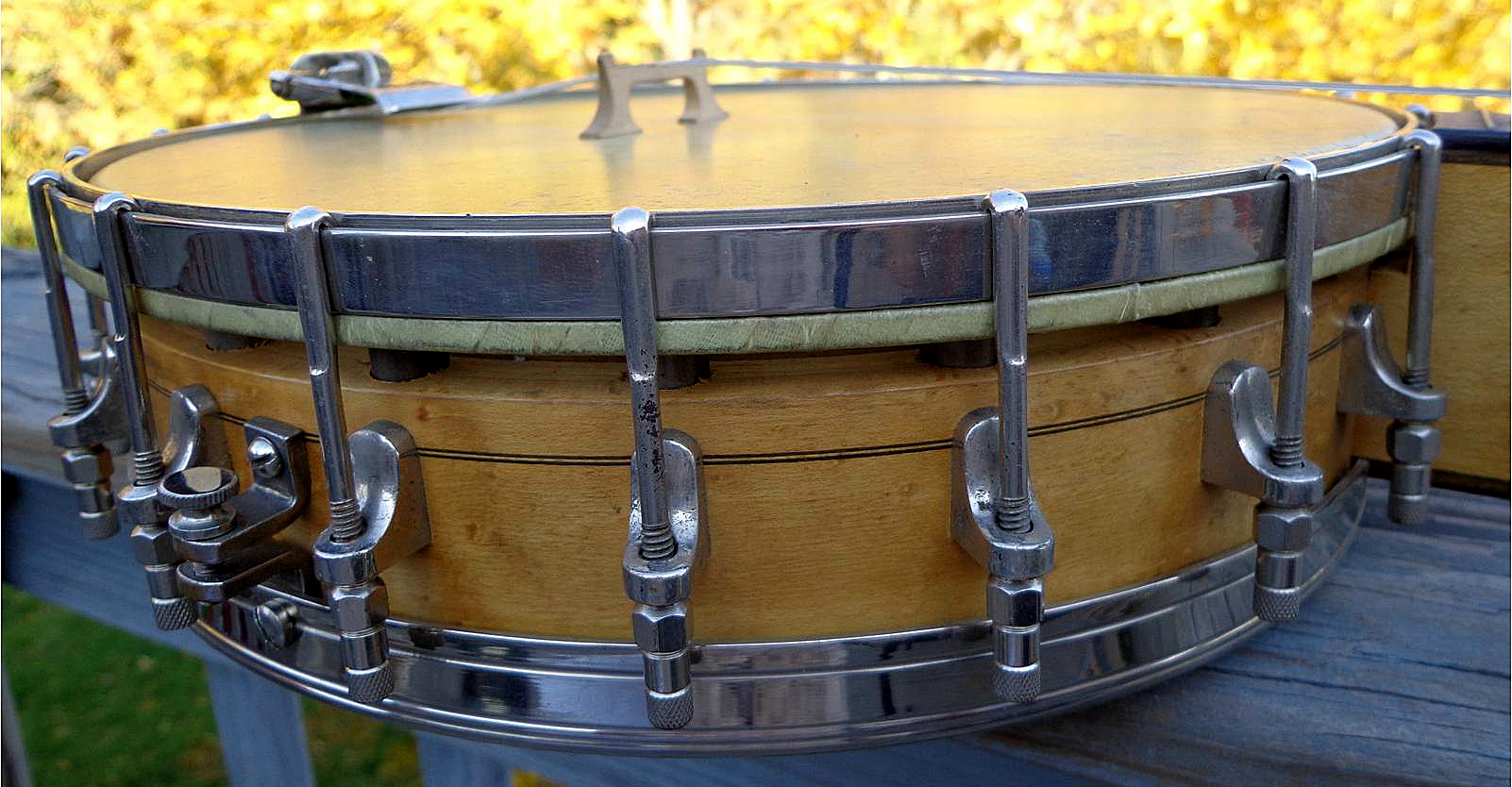
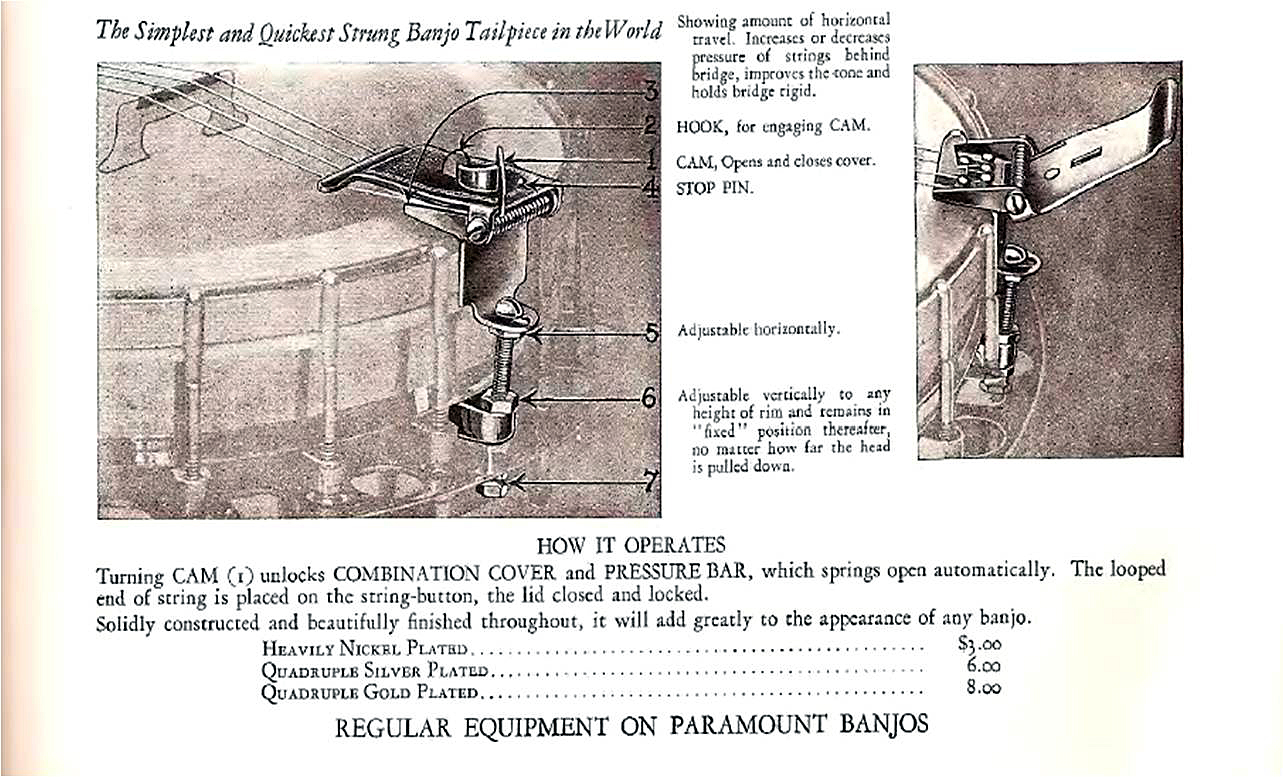
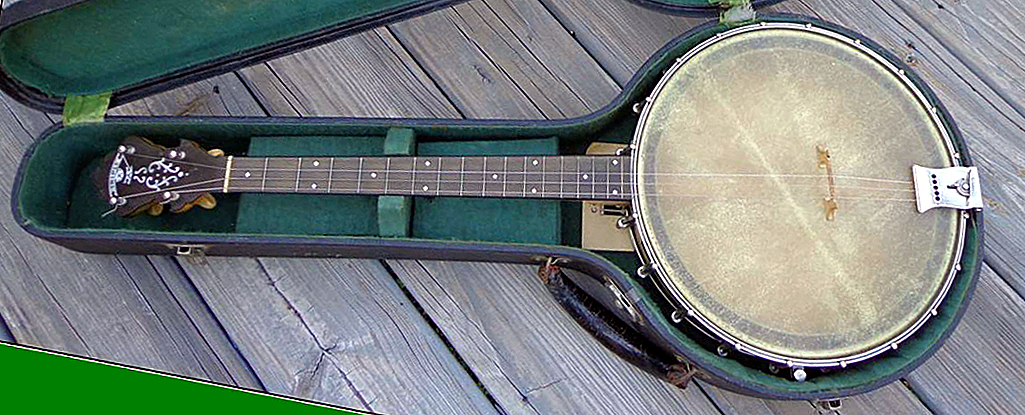
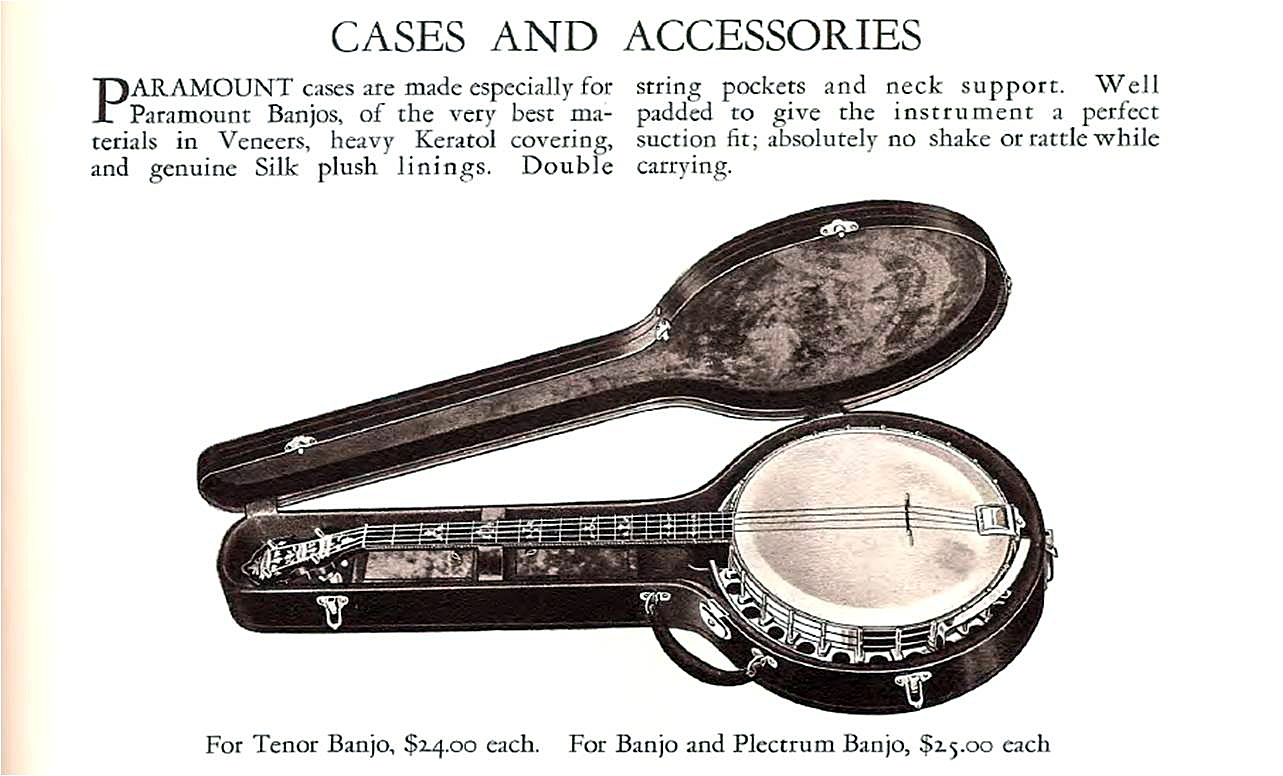
hi,,,,just bought a 1922 triple x …I need tuners i think…what kind should i use…
Nice looking Triple-X sent by email). In order to give you more details on your banjo I’ll need more images of the headstock design and resonator, the latter from the side and the back.
Re your tuners, if tightening the screws does not work they can be taken apart and cleaned, then have some fiddle rosin applied to given them a little more staying power. Mine appear to work with the occasional tightening but I have also purchased some ABM (German) planetary tuners that I will install sometime. To find out more about those check out this page on my site: http://www.lockyphoto.com/triplexbanjo/tweak-the-sound/.
I like the clear head on your Triple-X and am curious to hear what the tone is like — I will be posting some sounds clips on my skin head version for comparison. Looking forward to hearing from you.
Re the date of 1922, it is more likely no earlier than 1924 — see the History page — send more images for a better idea.
Best,
DL